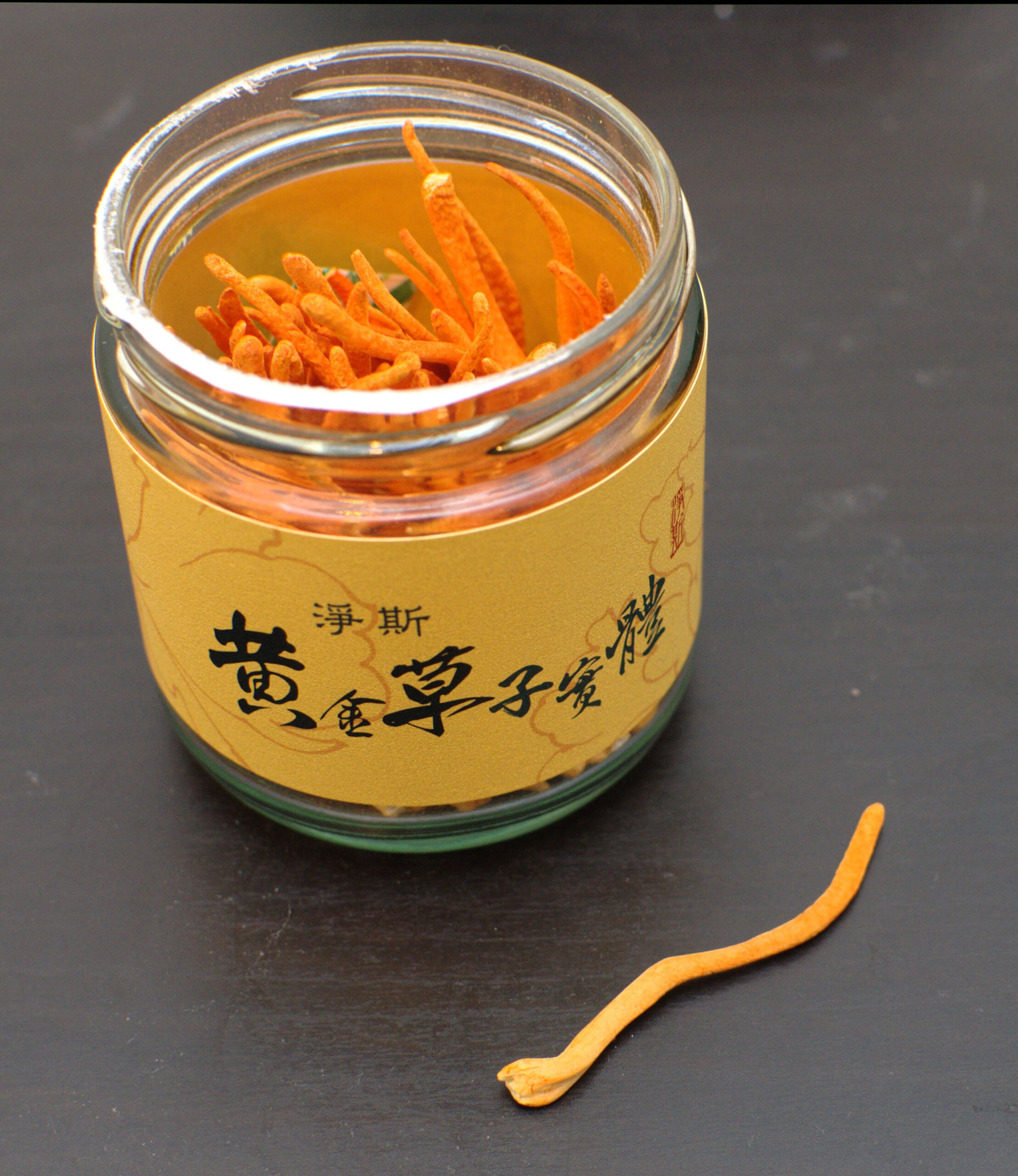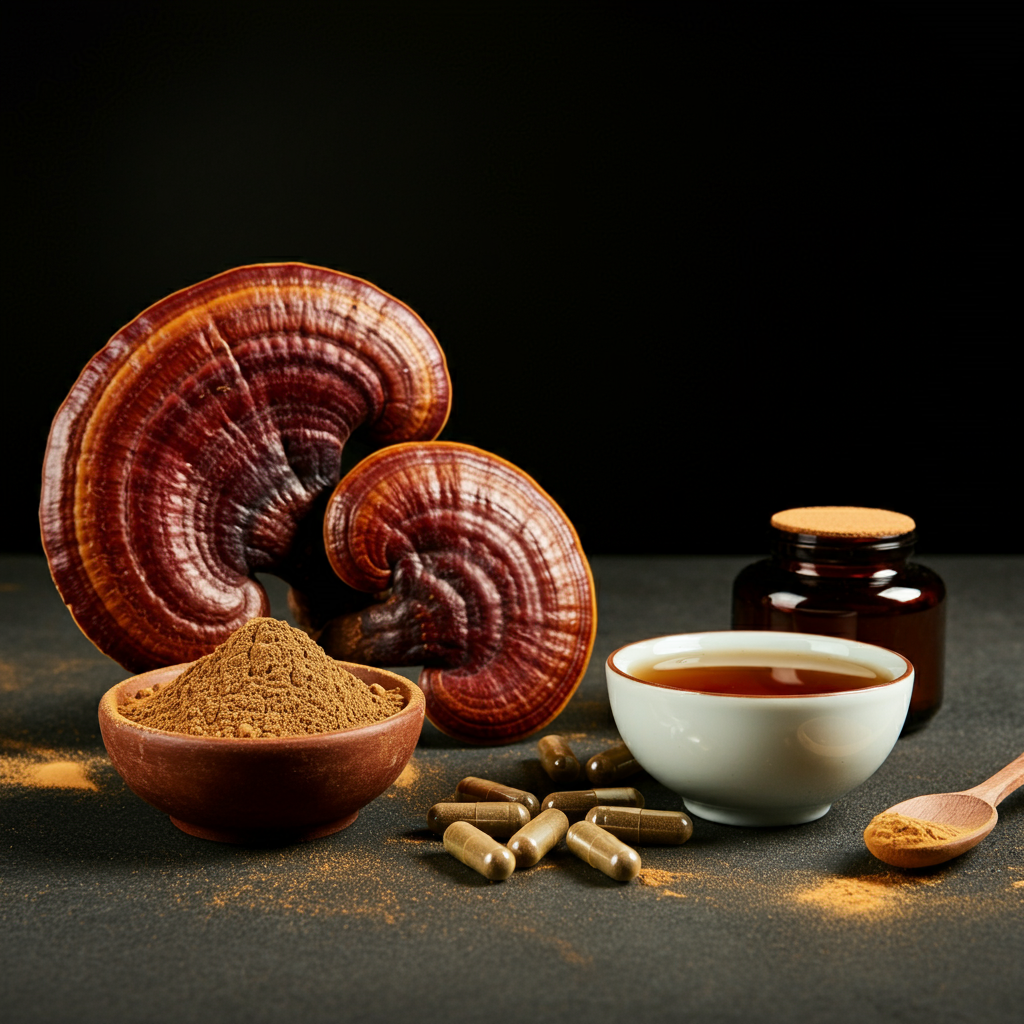Cordyceps Mushrooms: A Clinical Overview
Cordyceps is a popular medicinal mushroom that has traditionally been consumed in China for centuries. It is now becoming popular in the western market, praised for its abilities to improve athletic performance, energy levels, respiratory health, and overall physical capabilities. On top of these benefits, studies suggest it has beneficial effects on immune function, and may help fight infections. Lastly, there is also evidence to suggest it may help in the treatment of various cancers.
Two Types Of Cordyceps
Cordyceps militaris
This is the most commonly used in supplements. It is cultivated around the world and easily recognized by its bright orange color.

Ophiocordyceps sinensis
This is the version traditionally used in China. It is prohibitively expensive for most consumers, as it is not cultivated and must be wild harvested.

Photo by Bibekkunwar7

Photo by Mario Biondi
The story begins with the “Caterpillar Fungus”
For centuries, the prized Ophiocordyceps sinensis has held a revered place in traditional Chinese medicine. It is known as the “Caterpillar Fungus,” due to its unique parasitic relationship with caterpillars in the high-altitude plateaus of the Himalayas. Its rarity and potent properties have positioned it as one of the world’s most expensive natural products, surpassing even saffron and black truffles in value. A kilogram of Ophiocordyceps sinensis can surpass 20,000 USD
The scarcity of Ophiocordyceps sinensis stems from its dependence on wild harvesting in its remote Himalayan habitat. While cultivation methods are being explored, they remain largely experimental. Much of the research conducted on Ophiocordyceps sinensis focuses on a cultivated form known as CS-4. Derived from an isolated culture of Ophiocordyceps sinensis it is grown in a liquid medium, allowing for a more accessible and sustainable avenue for scientific exploration.
You can learn more about CS-4 here.

Cordyceps militaris
Cordyceps militaris has become the prominent species for commercial cordyceps supplements. Its widespread cultivation allows for significantly lower costs compared to its wild counterpart, Ophiocordyceps sinensis. Despite this affordability, Cordyceps militaris often demonstrates comparable or even superior levels of bioactive compounds and therapeutic effects. This species is easily recognized by its vibrant orange hue, evident in its fruiting bodies, extracts, and tinctures.
While more accessible than wild cordyceps, Cordyceps militaris remains a premium product compared to other cultivated mushrooms. It’s important for consumers to be aware of the varying grades of Cordyceps militaris, particularly in Asian markets where it is also consumed as a food. “Food-grade” Cordyceps undergoes a preliminary extraction, diminishing its potency compared to supplements specifically cultivated for therapeutic use.
How Does Cordyceps Work?
Cordyceps mushrooms are renowned for their bioactive compounds, primarily adenosine and cordycepin. While adenosine is characteristic of Ophiocordyceps sinensis, Cordyceps militaris predominantly contains cordycepin, a closely related analog. However, it’s important to note that Cordyceps militaris also contains certain forms and quantities of adenosine.
Beyond these key compounds, a complex array of other bioactive constituents likely contribute to the therapeutic effects of cordyceps. The concentration of these compounds can vary significantly depending on several factors, including the specific strain cultivated, cultivation methods employed, storage conditions, extraction processes, and other variables. This inherent variability underscores the importance of careful sourcing and quality control in cordyceps products.

Adenosine
Adenosine is a nucleoside that serves as a building block for essential molecules like ATP and cyclic AMP, playing a central role in energy transfer, cellular signaling, and numerous physiological processes

Cordycepin
Cordycepin is very similar in structure to adenosine. Its effects are largely attributed to its interaction with various enzymes and receptors in the body, particularly those involved in adenosine metabolism and signaling.
Other Important Compounds
BETA-GLUCANS
These complex sugars are abundant in Cordyceps and contribute significantly to its immunomodulatory, antioxidant, and anti-inflammatory effects.
ERGOSTEROL
This sterol is a precursor to vitamin D2 and possesses antioxidant and anti-inflammatory activities. It’s a major component of Cordyceps and may contribute to its overall health benefits.
CORDYCEPIC ACID
This sugar alcohol exhibits antioxidant, anti-inflammatory, and diuretic properties. It may play a role in Cordyceps’ ability to protect against cellular damage and promote fluid balance.
Hydroxyethyl adenosine
This adenosine analog exhibits anti-inflammatory, anti-tumor, and neuroprotective effects.
Cordyceps: Clinical Overview
Clinical trials on Cordyceps (including both Cordyceps sinensis and Cordyceps militaris) have frequently investigated its potential to enhance exercise performance and reduce fatigue, particularly in healthy elderly individuals and some athlete populations, showing improvements in measures like maximal oxygen uptake (VO2max) and ventilatory threshold (VT). Beyond performance, studies have explored its benefits for cell-mediated immunity in healthy men, shown positive effects on micturition and sexual function in elderly males with benign prostatic hyperplasia (BPH), and demonstrated early trends of effectiveness in mild to moderate COVID-19 inflammation. While results vary depending on the specific population and study design, Cordyceps supplementation has generally been found to be safe and well-tolerated across these human trials, with adverse events reported as minimal or non-significant.
Exercise Performance and Endurance
- Cordyceps supplementation significantly increased maximal oxygen uptake (VO2max) and anaerobic thresholds (VO2θ) in healthy elderly humans after 6 weeks of treatment, supporting its potential for improving exercise capacity and resistance to fatigue. (Xiao et al., 1999)
- Cs-4 supplementation promoted fat metabolism, sparing glycogen usage, and showed positive circulatory and metabolic effects during submaximal exercise in endurance-conditioned athletes. (Nicodemus et al., 2001)
- Oral CordyMax supplementation enhanced aerobic capability, endurance performance, and exercise metabolism in healthy, mid-age to elderly sedentary humans, leading to increased VO2peak, work output, and reduced time for a 1-mile walk. (Zhu & Rippe, 2004)
- Cordycpes (Cs-4) improved oxygen uptake, aerobic capacity, and ventilation function, and resistance to fatigue in healthy elderly volunteers after 6 weeks. (Xiao et al., 2004)
- Cordyceps (Cs-4) supplementation was found to improve exercise performance in healthy older subjects by increasing metabolic and ventilatory thresholds after 12 weeks. (Chen et al., 2010)
- Three weeks of Cordyceps militaris containing mushroom blend supplementation significantly improved maximal oxygen consumption (VO2max), with potential improvements in ventilatory threshold (VT) and time to exhaustion (TTE), while acute supplementation also showed benefits in TTE. (Hirsch et al., 2016)
- Cordyceps supplementation improved time to exhaustion (TTE), ventilatory threshold (VT2), and VO2max in long-distance runners, indicating enhanced fatigue tolerance. (Thongsawang et al., 2021)
- Supplementation with Cordyceps sinensis lowered heart rate at submaximal intensity and improved aerobic performance in amateur marathoners in a 5K test after 12 weeks. (Savioli et al., 2022)
- Cordyceps militaris mushroom infusion in athletes led to higher oxygen saturation, stabilized heart rate, reduced running times, and decreased fatigue, correlated with an increase in red blood cell size and hemoglobin content. (Pasha et al., 2024)
Immune System Modulation
- Cordyceps militaris enhanced cell-mediated immunity in healthy Korean men by significantly increasing natural killer (NK) cell activity, lymphocyte proliferation, and Th1 cytokines like IL-2 and IFN-γ. (Kang et al., 2015)
- Cordyceps militaris supplementation resulted in significantly higher NK cell activity and IgA levels in healthy adults over 12 weeks, suggesting beneficial immunomodulating effects. (Jung et al., 2018)
- A mycelium extract of Cordyceps (CBG-CS-2) increased natural killer (NK)-cell activity in healthy Korean adults after 8 weeks, indicating a positive immunomodulatory effect. (Jung et al., 2019)
Respiratory Health
- Cordyceps sinensis improved health-related quality of life, asthma symptoms, and lung function in patients with moderate-to-severe asthma, accompanied by a marked decrease in inflammatory biomarkers and an increase in IgG. (Wang et al., 2016)
- Cordyceps militaris capsules, as an adjuvant to standard treatment, showed effectiveness in patients with mild to moderate COVID-19 infection by hastening recovery, improving clinical symptoms, and achieving negative RT-PCR tests sooner. (Dubhashi et al., 2023)
Cardiovascular and Metabolic Health
- Cordyceps was shown to reduce serum oxidized LDL-cholesterol and increase HDL-cholesterol in humans with reduced HDL-cholesterol. (Zhu et al., 2003)
- Cordyceps (Cordymax) improved glucose metabolism (reducing fasting blood glucose and insulin, increasing insulin sensitivity) and improved steady-state hepatic bio-energy status. (Zhu & Rippe, 2004)
- Cordyceps militaris extract was found to be safe and effective for improving liver CT scans in patients with mild liver dysfunction, suggesting it may protect against the progression of fatty liver or cirrhosis by suppressing lipid accumulation in hepatocytes.(Heo et al., 2015)
Prostate, Urinary, and Sexual Health
- Cordyceps militaris fruiting bodies showed a tendency to increase urinary flow, decrease prostate gland size, and alleviate micturition symptoms in patients with benign prostatic hyperplasia (BPH). It also had a positive effect on sexual functions, improving parameters such as erectile maintaining, sexual problems, and satisfaction. (Hsieh et al., 2022)
Cordyceps Clinical Trials
Clinical trials have explored the potential of Cordyceps to enhance various aspects of human health. Studies indicate that Cordyceps may improve aerobic capacity, exercise performance, and respiratory function in both healthy elderly individuals and athletes. Promising results have also been observed in its ability to enhance immune function, support liver health, and alleviate symptoms of benign prostatic hyperplasia (BPH). Furthermore, some research suggests potential therapeutic applications for Cordyceps in conditions such as asthma, COVID-19, and insomnia, although further investigation is needed to confirm these findings. The diverse preparations and active compounds within Cordyceps contribute to its wide-ranging effects, warranting continued research to fully elucidate its mechanisms of action and optimize its therapeutic use.
Note: Table is not well suited for mobile browser. Browse on desktop or laptop for easy use.
